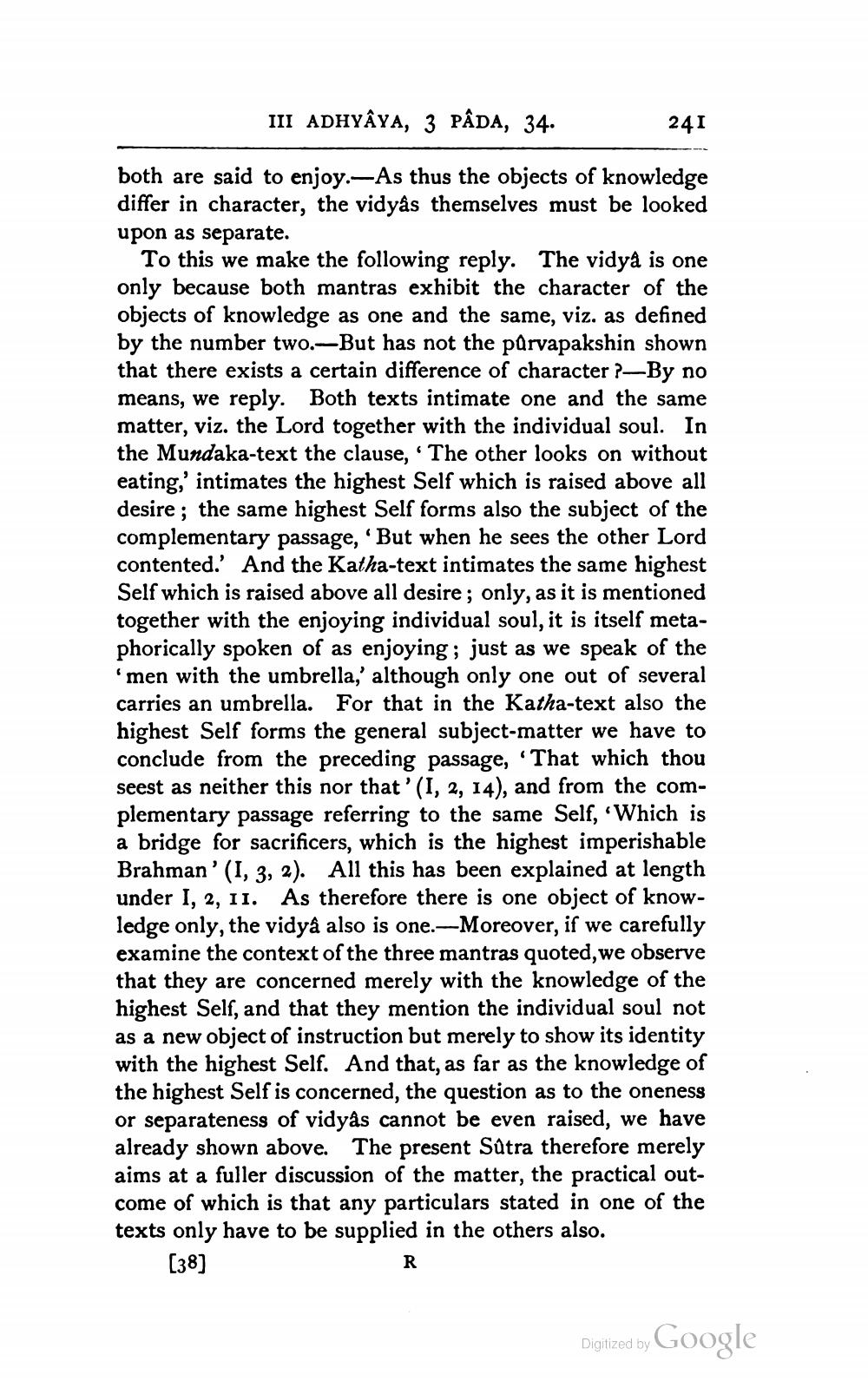________________
III ADHYAYA, 3 PÂDA, 34.
241
both are said to enjoy.—As thus the objects of knowledge differ in character, the vidyâs themselves must be looked upon as separate.
To this we make the following reply. The vidya is one only because both mantras exhibit the character of the objects of knowledge as one and the same, viz. as defined by the number two.-But has not the parvapakshin shown that there exists a certain difference of character ?-By no means, we reply. Both texts intimate one and the same matter, viz. the Lord together with the individual soul. In the Mundaka-text the clause, The other looks on without eating,' intimates the highest Self which is raised above all desire; the same highest Self forms also the subject of the complementary passage, 'But when he sees the other Lord contented.' And the Katha-text intimates the same highest Self which is raised above all desire; only, as it is mentioned together with the enjoying individual soul, it is itself metaphorically spoken of as enjoying; just as we speak of the 'men with the umbrella,' although only one out of several carries an umbrella. For that in the Katha-text also the highest Self forms the general subject-matter we have to conclude from the preceding passage, “That which thou seest as neither this nor that'(1, 2, 14), and from the complementary passage referring to the same Self, Which is a bridge for sacrificers, which is the highest imperishable Brahman'(1, 3, 2). All this has been explained at length under I, 2, 11. As therefore there is one object of knowledge only, the vidyâ also is one.—Moreover, if we carefully examine the context of the three mantras quoted, we observe that they are concerned merely with the knowledge of the highest Self, and that they mention the individual soul not as a new object of instruction but merely to show its identity with the highest Self. And that, as far as the knowledge of the highest Self is concerned, the question as to the oneness or separateness of vidyås cannot be even raised, we have already shown above. The present Sútra therefore merely aims at a fuller discussion of the matter, the practical outcome of which is that any particulars stated in one of the texts only have to be supplied in the others also.
[38]
Digitized by
Digitized by Google




